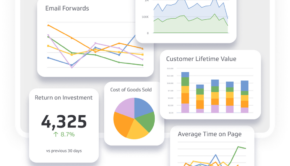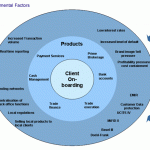Top 7 Tips for Recruiting C-level Professionals
When you first start your company, you are the CEO and only have one employee. However, there comes a time when you must mature. And any CEO leading a growing business would need top-level assistance.
The recruiting procedure for C-level executives differs from that for lower-level workers. With these pointers, you’ll be able to make the best C-level recruit possible.

When the company grows, you will need a financial executive—the Chief Financial Officer (CFO). Maybe you want someone in control of technology—your Chief Technology Officer—because you’re more centred on policy (CTO). Or you need someone to handle the day-to-day operations because you’re so focused on the strategy—your Chief Operations Officer (COO). When it comes to big-picture priorities and procedures, the C-suite essentially becomes the go-to team.Find best c level recruitment agencies near you.
The recruiting procedure for C-level executives differs from that for lower-level workers. For starters, they’re paid better. They even carry a lot of luggage and a lot of practice. A poor entry-level employee can slow it down, but a bad C-level employee can send the company into a tailspin. It is important to make the correct decision when recruiting at the C-level. It needs the the professional approach of Boardsi to get the right candidates for the position.
1. Prior to hiring, make a list of your objectives
Determine just what you’re looking for in the dream candidate before you start looking. C-level workers come with higher salaries and a desire to own a piece of the business. Determine the performance criteria for that position. How will candidates reduce wasteful spending, boost funding, and launch a new and better platform?
Before you recruit, figure out what your objectives are so you can use them in the interviews. A top candidate should be candid about what they believe they will do with the business. Being open and honest with your priorities from the start helps mean that you and your candidate are on the same page.
2. Find the Right Fit for The Company’s Size and Industry
If you’re hiring a C-level executive, make sure your company’s scale, history, and industry aren’t going to get in the way of his or her growth. A CEO of a 50-employee corporation has a somewhat different position than a CEO of a 20,000-employee company. Whatever the size of your business, it’s critical that the executive shows that he or she will fit in well with your team.
Don’t make your hiring decision only on the basis of the candidate’s experience in a company your size and in your industry.
3. Are there any current employees who would be a good fit for the position?
Rather than recruiting from inside, major corporations are rapidly turning to the outside for C-level hires. Consider searching inside if the business is flourishing, with a strong atmosphere and high employee motivation. Culture is difficult to master, but seeing someone in the business who already understands it making the transition to the C-suite might be beneficial. Find best c level recruitment agencies near you.
This will boost productivity, which is an important part of organisational culture, and therefore employee satisfaction. If you promote your VP of Marketing to CMO, you’ll immediately have a vacancy for a VP of Marketing. VP of Brand and VP of Marketing, for example, are two positions that would report to the CMO. Suddenly, two positions must be filled, each of which can be filled internally. People begin to be promoted, which makes them happier and raises morale.
Don’t be afraid to look around, though. Maybe your organisation has a lot of young people who aren’t quite willing to take the next step. Bringing in a more experienced executive will assist in teaching them the expertise they need to advance.
4. Make a lot of phone calls to references
It’s easy to pad a resume. Achievements may be fudged. Controlling references, on the other hand, is even more difficult. Concentrate the most of your efforts on speaking with former employees of the executive. You could learn something important about them that they didn’t tell you about, which might influence your decision.
Another factor to remember is whether the sources will include further referrals. It’s safer that you have as many data points as possible. One thing to keep an eye on is the number of people who refuse to express their opinions. Many people will not say something derogatory, but they will also not offer false praise. If no one says something good, it’s possible that there’s something wrong beneath.
5. Make Hiring a Collaborative Process
If you’re hiring an external C-level executive, make sure the staff who will report to that executive are included in the process. If they don’t agree with the decision, it could lead to a lot of conflict inside the agency. Additionally, the employees would have full access to their team’s priorities, challenges, and procedures.
6. Move slowly and confidently
At the end of the day, just appoint a C-level executive if you’ve found a real need. Don’t spend money, equity, or time on a C-level recruit if the company’s priorities don’t need it. Don’t be afraid to take your time when it comes to finding the ideal C-level executive for your company.
Finally, believe your instincts. You’re the boss of your business. Perhaps it’s not the smartest idea if you can’t trust the guy you’re going to employ. You’ll have to trust the executive to run their agency on their own.
But if you’ve found the right one, it’s time to get moving. Make the recruit, incorporate them into the organisation, and you can see much more results as a result of the change.
7. Where do you find excellent C-suite candidates?
It’s likely that the next C-suite recruit is already employed by a rival, in a different industry, or perhaps in the office next door. When you start interviewing, you won’t know for sure. With a straightforward job description in mind, it’s time to start sharing it in the hopes of attracting a diverse pool of candidates. Find best c level recruitment agencies near you.
Companies should search within technical networks for great jobs, just as career seekers should check within their networks for job leads. This procedure will take a variety of forms, including:
- Having a conversation with the industry’s colleagues
- Getting in touch with your alma mater’s alumni
- Looking for new leads in your own board members
- External examination
Wise leaders also seek to broaden their talent base. Look outside of the own networks for specialist organisations and leaders that will assist a forward-thinking business in finding more diverse talent.
Conclusion
The prerequisite for all C-level positions has turned toward market acumen and “softer” leadership skills, which was a common trend in our results. Technical abilities are only the beginning, the absolute minimum. A person must be a strong communicator, partner, and strategic strategist to succeed as a C-level executive, and we believe the movement toward a general business orientation over a functional orientation would continue. For example, a CEO may now rely on a CIO to weigh in on a conversation about entering a new market and how the company’s systems can accommodate that expansion. What will the difficulties be? What will the long-term consequences of the IT investments needed to finance the expansion be? Answers to those concerns will be required from the CIO.
C-level executives will no longer be limited to managing their own corporate units; they will now serve as involved members of the firm’s senior leadership, advising the CEO on important decisions. “Today’s C-level person needs to be more team-oriented, capable of constant multitasking and leading without rank, and able to resist tension to ensure that his subordinates do not flame out,” according to one executive recruiter. And he has to do it all while wearing a wide grin in an open workplace. To put it another way, we’re talking about a brand-new generation of CEO.
















